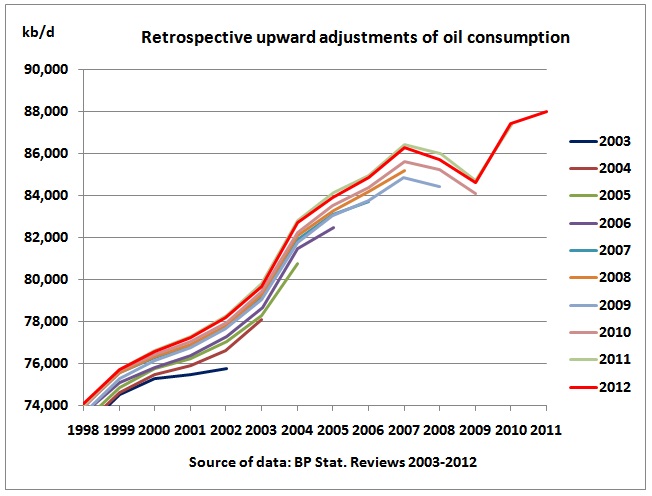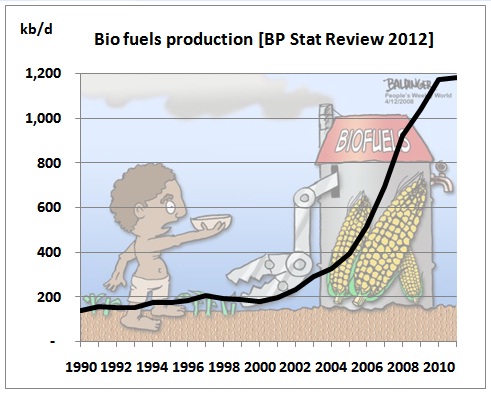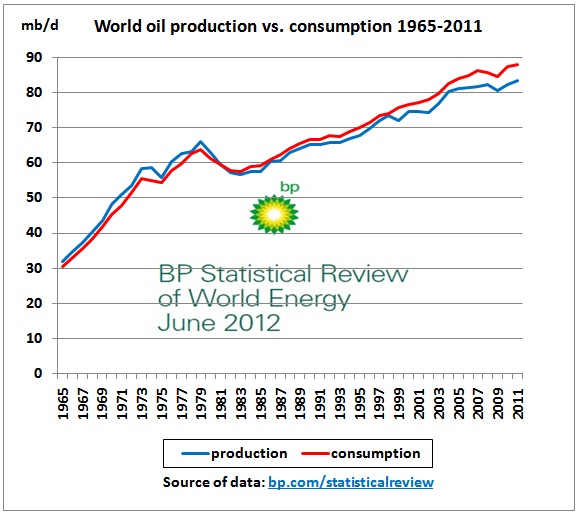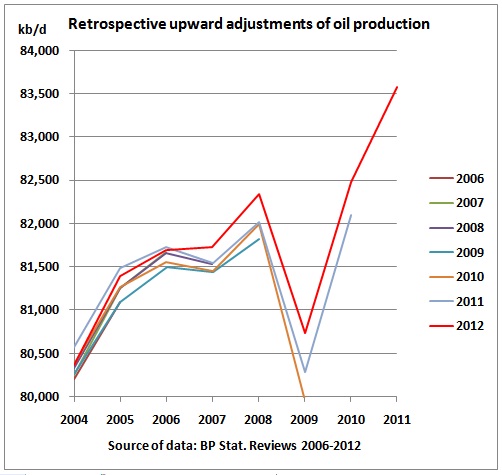Graphs prepared using data from the BP Statistical Review 2012
http://www.bp.com/sectionbodycopy.do?categoryId=7500&contentId=7068481
(1) Discrepancies
BP data show oil consumption being higher than oil production. The discrepancy has been growing from 1998 and was 4.3 mb/d in 2011. That’s quite a lot.
BP’s definition of “oil production”:
“Includes crude oil, shale oil, oil sands and NGLs ( the liquid content of natural gas where this is recovered separately).
Excludes liquid fuels from other sources such as biomass and coal derivatives.”
BP’s definition of “oil consumption”
“Inland demand plus international aviation and marine bunkers and refinery fuel and loss. Consumption of fuel ethanol and biodiesel is also included.
Differences between these world consumption figures and world production statistics are accounted for by stock changes, consumption of non-petroleum additives and substitute fuels, and unavoidable disparities in the definition, measurement or conversion of oil supply and demand data.”
So the oil production definition is a fairly classical oil definition, allowing now to include shale oil and also syncrude from tar sands.
The oil consumption definition is actually “all liquids”. By comparing previous versions of BP Reviews we find that this definition has changed:
 In the latest 2012 Review previous consumption data have been adjusted upwards, by up to 2.4 mb/d (in the case of 2002). Since 2008, consumption also includes biofuels, up to 1.2 mb/d
In the latest 2012 Review previous consumption data have been adjusted upwards, by up to 2.4 mb/d (in the case of 2002). Since 2008, consumption also includes biofuels, up to 1.2 mb/d
 Inserted cartoon from: http://www.toonpool.com/cartoons/Biofuels_9810
Inserted cartoon from: http://www.toonpool.com/cartoons/Biofuels_9810
Production data were also adjusted upward, but only up to 900 kb/d, for 2009
No matter what additional liquids were added into consumption and how statistics were adjusted the consumption above the traditional oil came at a high price:
 The additional liquids pushed up oil prices
The additional liquids pushed up oil prices
(2) Oil exports
The BP statistical review contains a worksheet “Oil – trade movements” with exports:
 Oil exports peaked in 2007. Data are from the work sheet “trade movements”
Oil exports peaked in 2007. Data are from the work sheet “trade movements”
Note that the peak of crude oil exports (using EIA data) occured already in 2005
 Unfortunately, the EIA data for that graph from here:
Unfortunately, the EIA data for that graph from here:
http://www.eia.gov/cfapps/ipdbproject/IEDIndex3.cfm?tid=5&pid=54&aid=4
go only up to 2009

